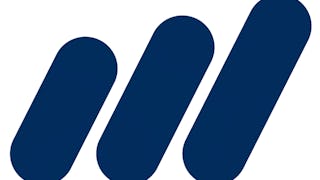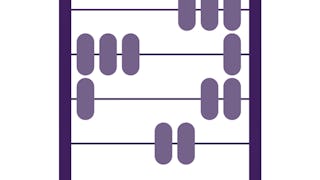The value of all the gold in the world is $25 trillion – yet very few investors have gold in their portfolios. Ironically, gold is the oldest financial asset, but it is poorly understood and under-researched. There are many stories about gold, but very little evidence. This course provides the evidence. After completing the course, you will understand how gold performs during equity market turmoil and during inflation surges and its role in a diversified portfolio. The course explores the reasons why the gold price has recently surged by focusing on the financialization of gold, central bank accumulation, de-dollarization efforts, questions about the status of the U.S. dollar as a reserve currency, and the potential demand shock if gold is classified in a future version of Basel III as an asset commercial banks can hold for regulatory purposes (central banks hold gold as a reserve asset and it seems contradictory not to allow commercial banks to do the same). The Golden Dilemma framework is also introduced to credible future price paths for gold. Finally, the long-term prospects for gold are detailed, given expected technological innovations.

Saving $160 on access to 10,000+ programs is a holiday treat. Save now.


Recommended experience
What you'll learn
Explore major drivers of gold's rise: financialization, de-dollarization, central bank buying, regulatory shifts, and the dollar's reserve role.
Explain the performance of gold as a safe-haven asset (gold’s returns during equity drawdowns and inflation surges, as well as non-financial crises).
Utilize a framework to evaluate the future price path of gold (weighing gold’s diversification potential vs. its high relative valuation).
Skills you'll gain
Details to know

Add to your LinkedIn profile
October 2025
4 assignments
See how employees at top companies are mastering in-demand skills

There are 4 modules in this course
This module explains why gold has sustained value over centuries by grounding its appeal in physical and institutional properties—durability, scarcity, fungibility, and the absence of single-authority control. We introduce the “golden constant” and evaluate gold’s performance as an inflation hedge, separating its long-term, purchasing-power stability from its short-term volatility. We then analyze gold’s role in diversified portfolios by examining its volatility and its (time-varying) correlations with equities and bonds, drawing out implications for portfolio risk. Finally, we assess the recent drivers of price increases and, using the golden-constant lens, construct plausible future price scenarios.
What's included
5 videos2 readings1 assignment
This module explains how gold’s price is shaped by supply rigidity (slow, capital-intensive mine responses) and sector-specific demand across jewelry, technology, and investment. It then examines how financialization—via exchange-traded funds and gold-backed stablecoins—has broadened access and intensified demand, weighing the trade-offs between physical holdings and ETF exposure (liquidity, fees, tracking error, and custody risk). Using the “golden constant” framework alongside new empirical evidence, we assess how ETF adoption has influenced real gold prices. We analyze how the “weaponization” of the U.S. dollar and sanctions regimes spur some countries to reduce dollar dependence and de-dollarize, redirecting portfolio demand toward gold. Finally, we evaluate central-bank accumulation—especially by China and Russia—its implications for global reserves, and what this means for future demand and price dynamics.
What's included
6 videos1 assignment
This module examines how the U.S. dollar’s reserve-currency status channels global demand into dollar assets while creating the Triffin dilemma. It then analyzes how bilateral central-bank swap lines, sanctions risk, and deliberate de-dollarization efforts are reshaping reserve strategies and lifting official-sector demand for gold. We review Basel III’s High-Quality Liquid Asset (HQLA) framework—eligibility tests, haircuts, and liquidity horizons—and evaluate the case for classifying gold as Tier 1 HQLA alongside top-quality sovereigns. Finally, we assess the demand and price impact if such a designation were adopted, including likely balance-sheet reallocation by banks and central banks and plausible price paths for gold under alternative adoption scenarios.
What's included
3 videos1 assignment
This module examines how the U.S. dollar’s reserve-currency status channels global demand into dollar assets while creating the Triffin dilemma. It then analyzes how bilateral central-bank swap lines, sanctions risk, and deliberate de-dollarization efforts are reshaping reserve strategies and lifting official-sector demand for gold. We review Basel III’s High-Quality Liquid Asset (HQLA) framework - eligibility tests, haircuts, and liquidity horizons - and evaluate the case for classifying gold as Tier 1 HQLA alongside top-quality sovereigns. Finally, we assess the demand and price impact if such a designation were adopted, including likely balance-sheet reallocation by banks and central banks and plausible price paths for gold under alternative adoption scenarios.
What's included
5 videos1 reading1 assignment
Instructor

Offered by
Explore more from Finance
 Status: Preview
Status: PreviewDuke University
 Status: Free Trial
Status: Free TrialCorporate Finance Institute
 Status: Free Trial
Status: Free TrialUniversity of Maryland, College Park
 Status: Free Trial
Status: Free TrialUniversity of London
Why people choose Coursera for their career





Open new doors with Coursera Plus
Unlimited access to 10,000+ world-class courses, hands-on projects, and job-ready certificate programs - all included in your subscription
Advance your career with an online degree
Earn a degree from world-class universities - 100% online
Join over 3,400 global companies that choose Coursera for Business
Upskill your employees to excel in the digital economy
Frequently asked questions
To access the course materials, assignments and to earn a Certificate, you will need to purchase the Certificate experience when you enroll in a course. You can try a Free Trial instead, or apply for Financial Aid. The course may offer 'Full Course, No Certificate' instead. This option lets you see all course materials, submit required assessments, and get a final grade. This also means that you will not be able to purchase a Certificate experience.
When you purchase a Certificate you get access to all course materials, including graded assignments. Upon completing the course, your electronic Certificate will be added to your Accomplishments page - from there, you can print your Certificate or add it to your LinkedIn profile.
Yes. In select learning programs, you can apply for financial aid or a scholarship if you can’t afford the enrollment fee. If fin aid or scholarship is available for your learning program selection, you’ll find a link to apply on the description page.
More questions
Financial aid available,


